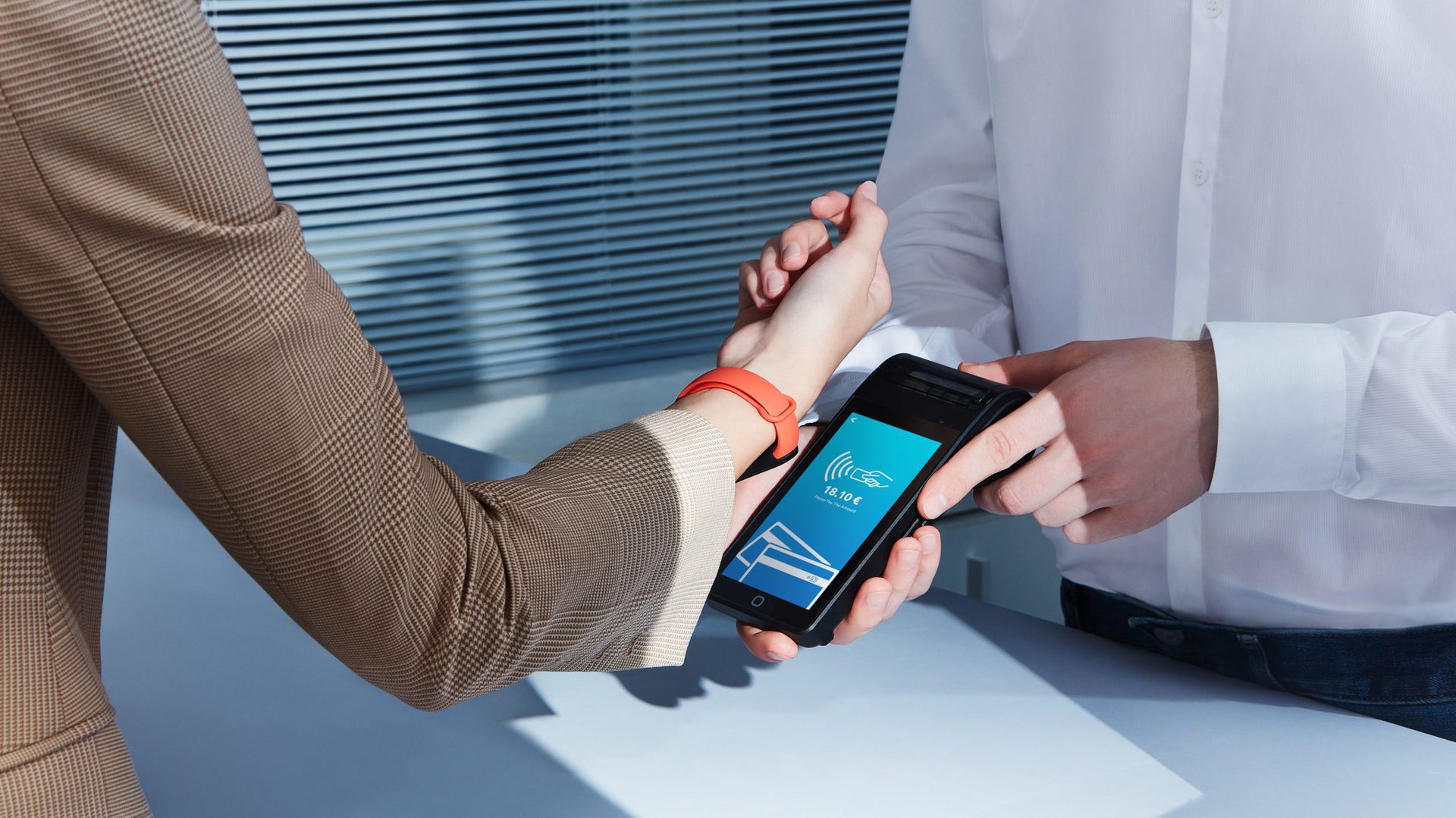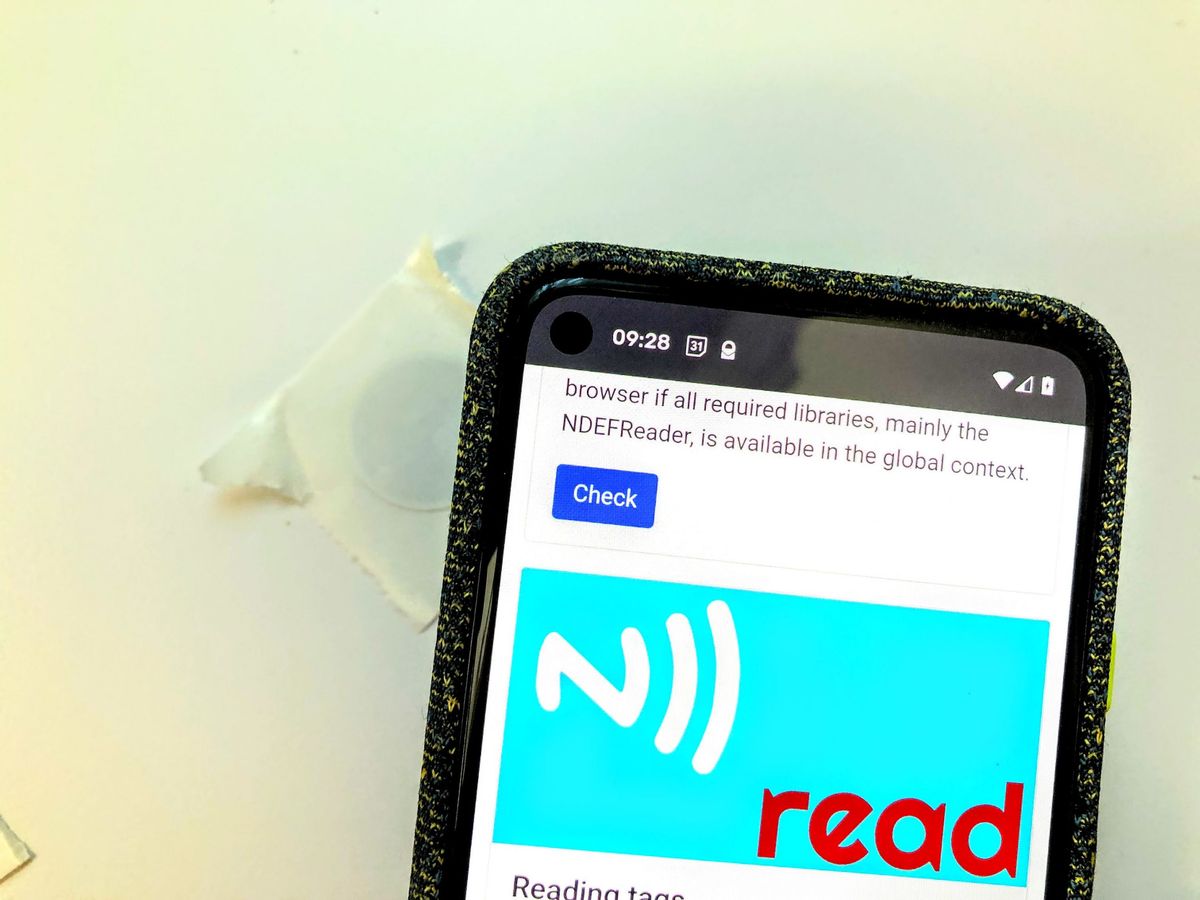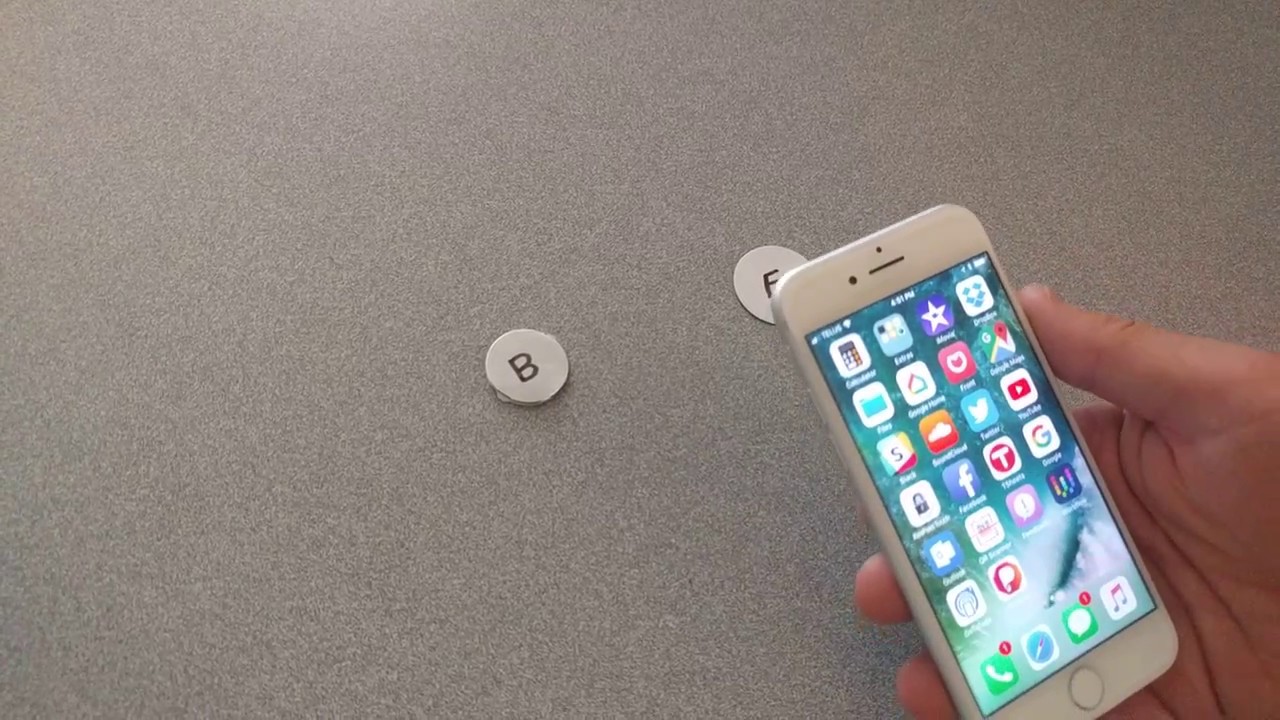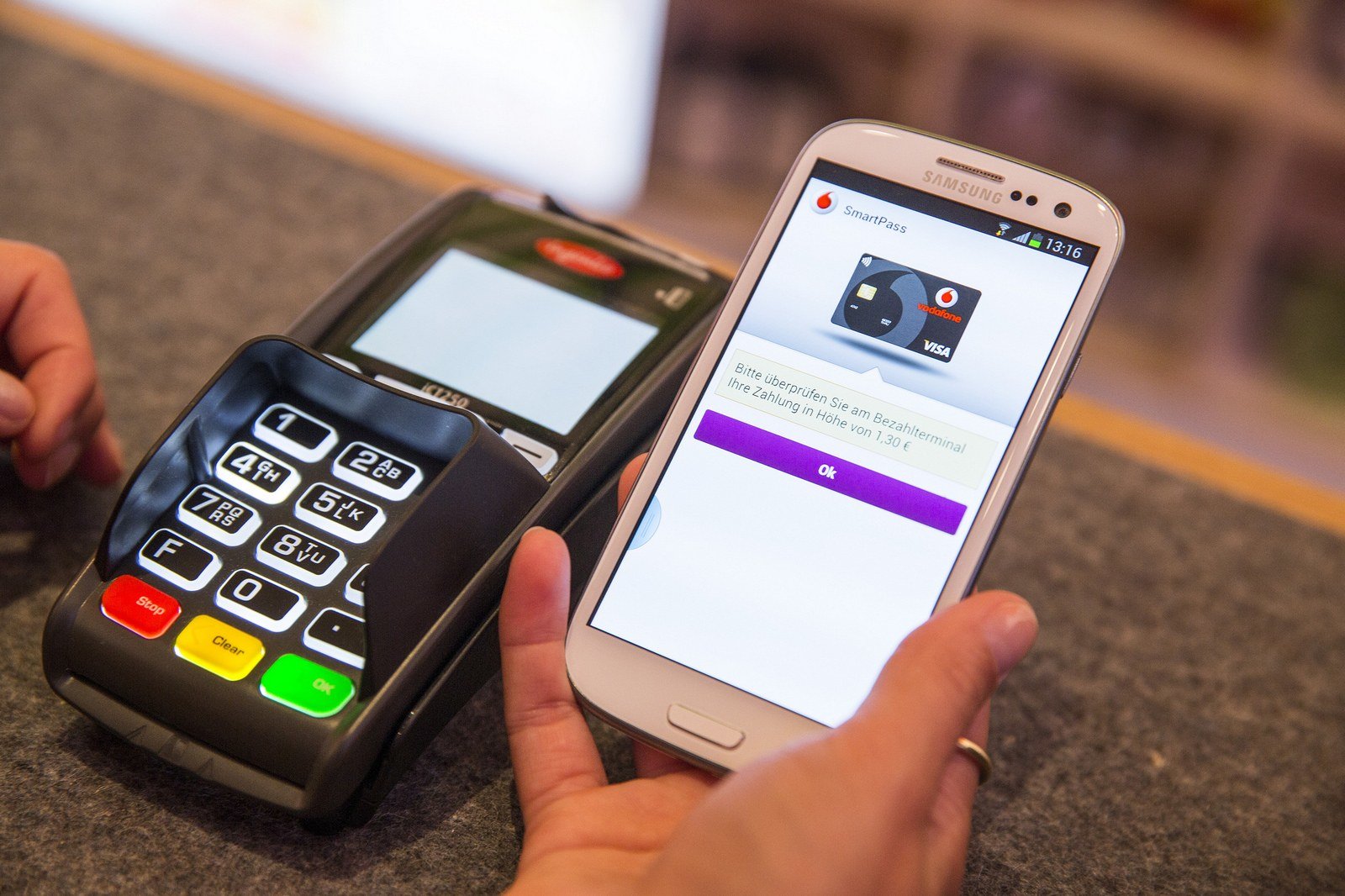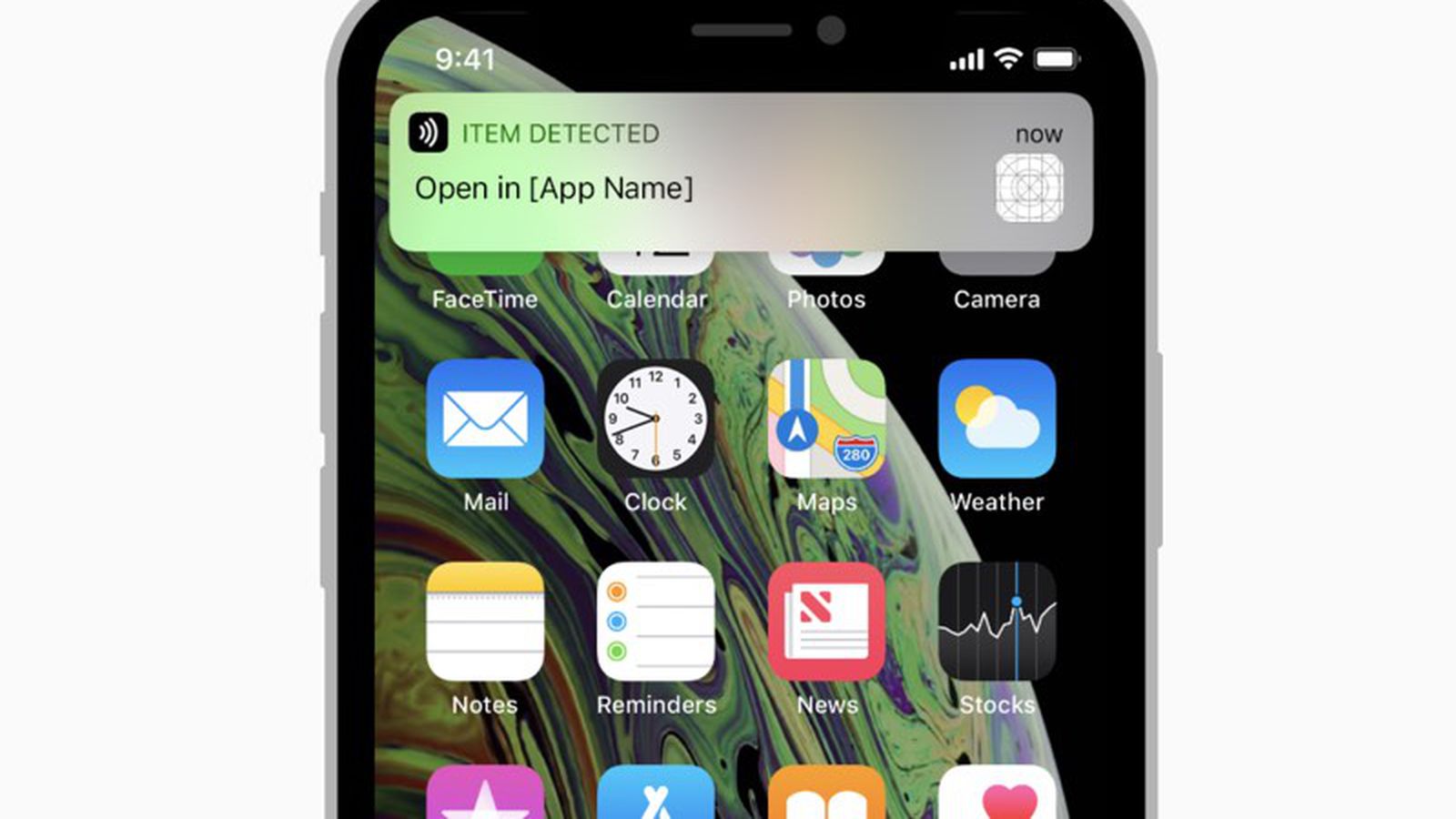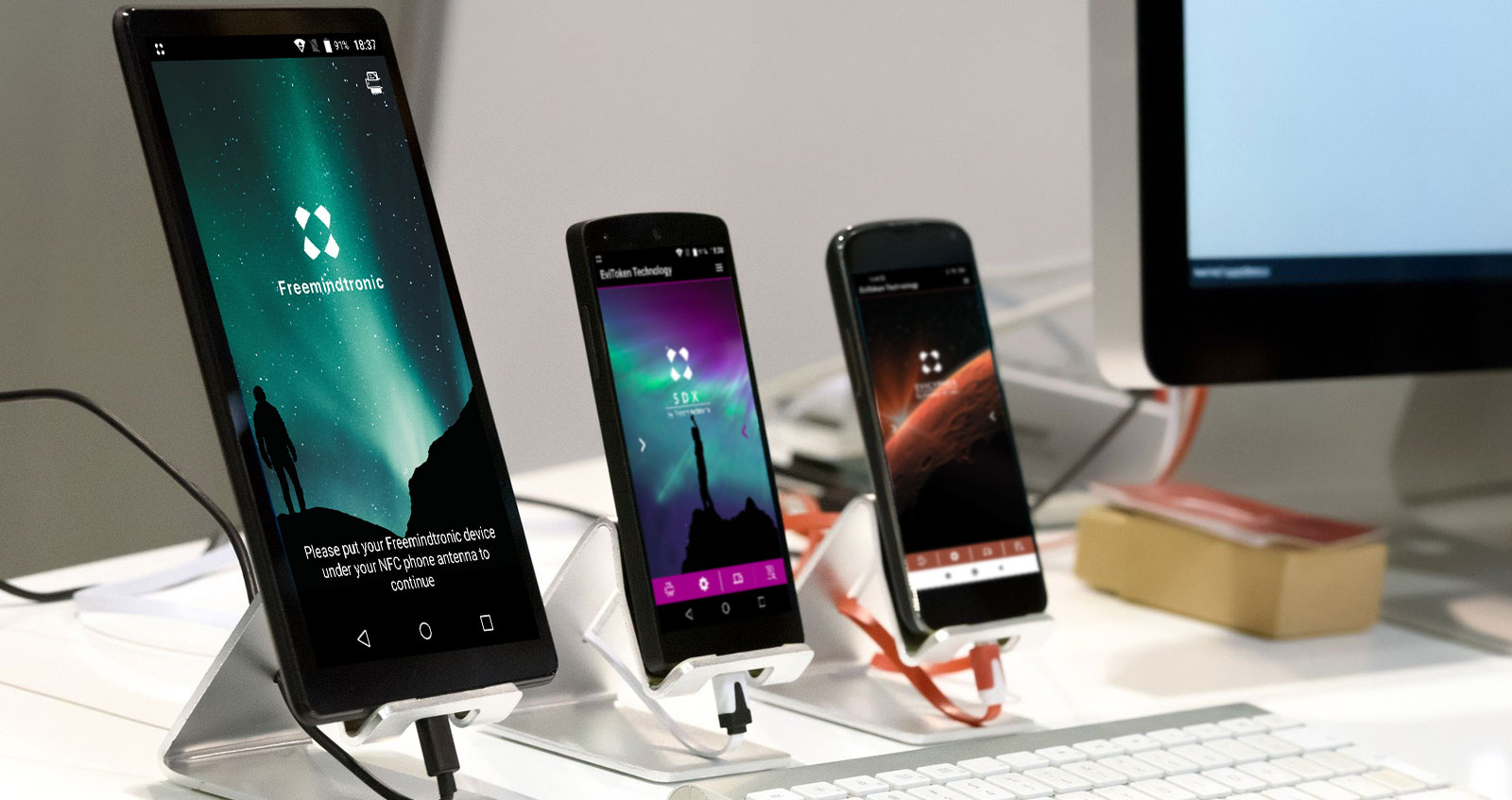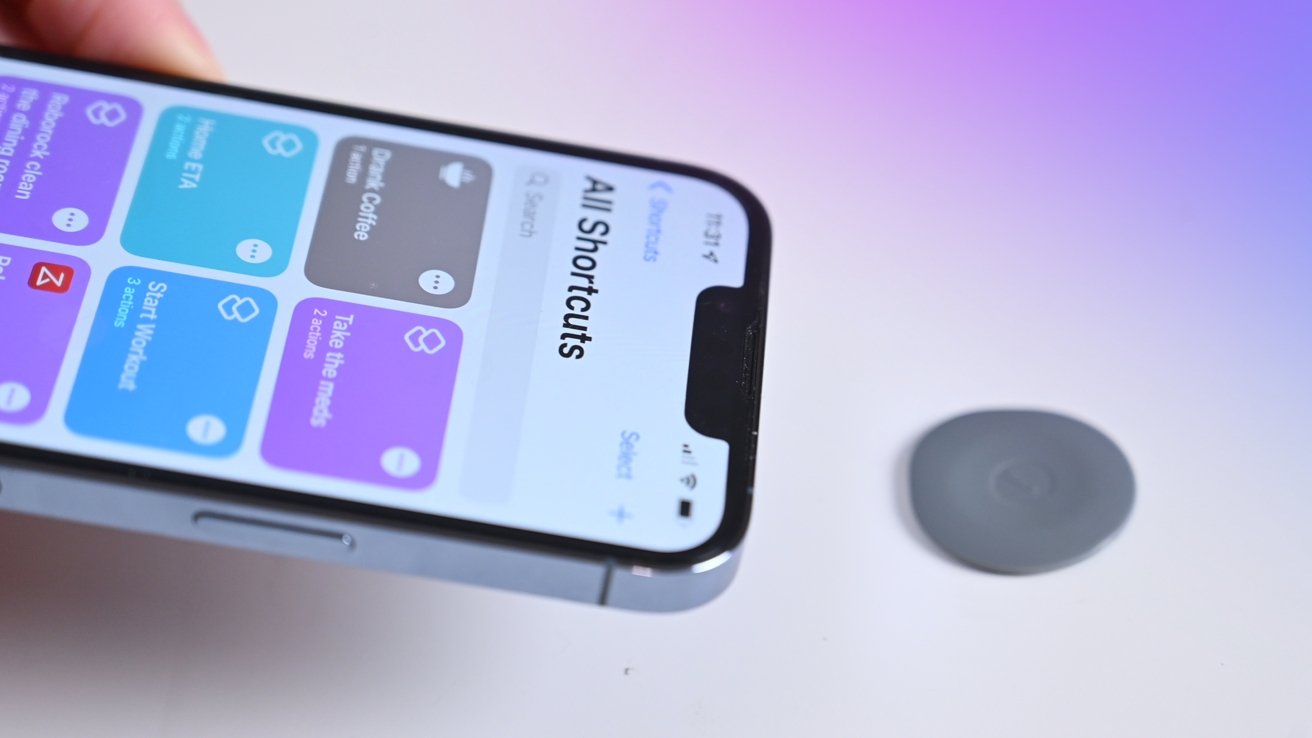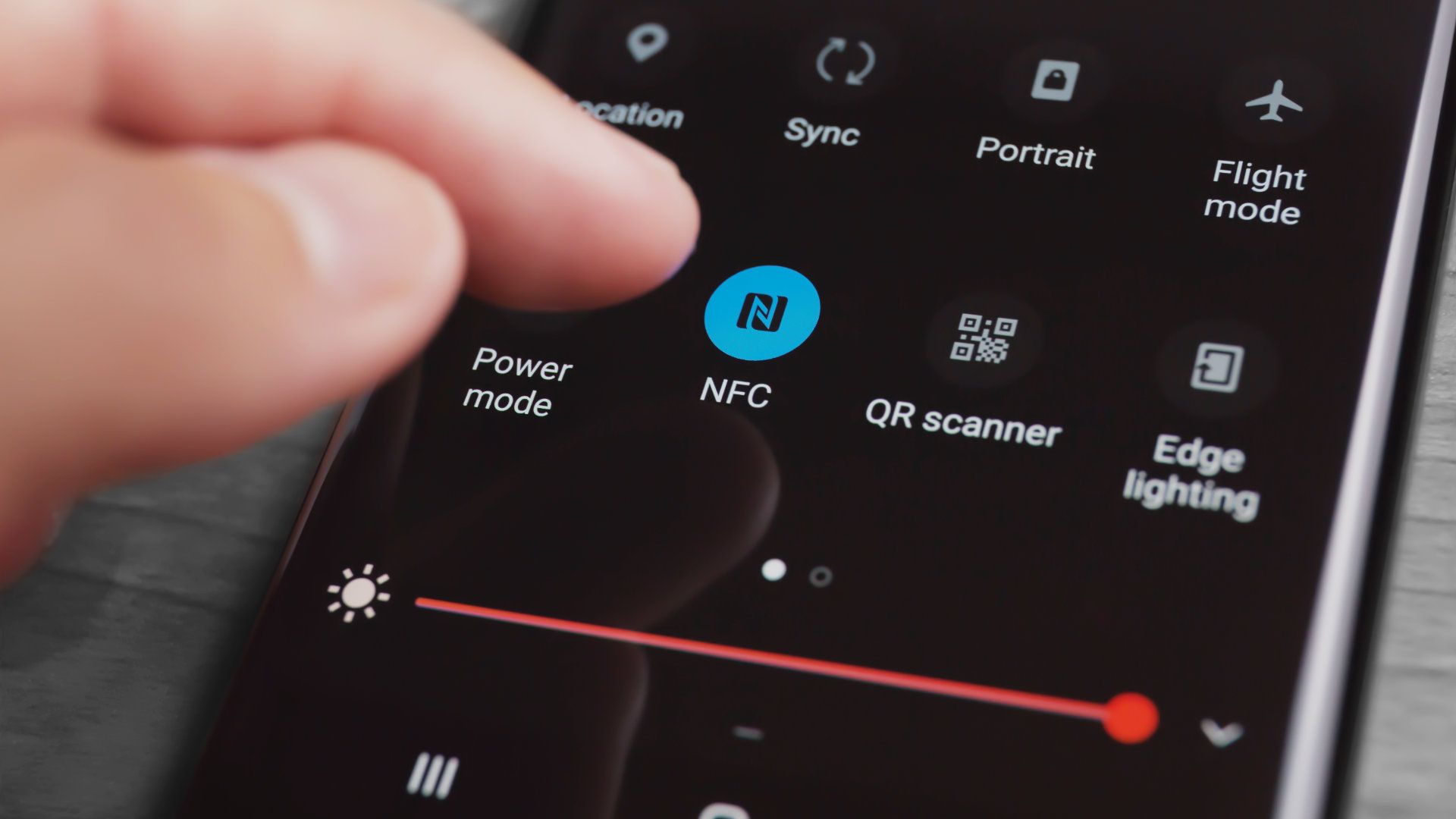What Is NFC?
NFC, which stands for Near Field Communication, is a wireless communication technology that allows devices to transfer data and establish connections by simply bringing them close together. It enables seamless communication between compatible devices, making tasks such as contactless payments, file transfers, and device pairing quick and convenient.
NFC operates on the principles of electromagnetic field induction, where two devices with NFC capabilities can exchange information by creating a short-range wireless link. This technology is built upon radio frequency identification (RFID) and is similar to other wireless communication methods like Bluetooth and Wi-Fi, but with a shorter range and faster data transfer speed.
One of the defining features of NFC is its simplicity. Unlike complex setup procedures or manual pairing processes, NFC enables devices to establish connections instantly. It only requires the devices to be within a close proximity, typically a few centimeters, for interaction to occur.
Originally developed primarily for secure contactless payments, NFC has gained popularity for a broad range of applications. Now integrated into many smartphones, NFC is not limited to financial transactions. It can be used for data exchange between devices, information retrieval, ticketing systems, smart home connectivity, and more.
While NFC technology is commonly associated with smartphones and tablets, it is important to note that other devices, such as credit cards, access keycards, and wearable devices, can also utilize NFC functionality. This interoperability allows for seamless integration and a wider array of practical applications.
In the next sections, we’ll explore how NFC works, delve into its benefits on phones, discuss common uses, and provide guidance on setting up and using NFC on your device.
How Does NFC Work?
Near Field Communication (NFC) technology operates on the principles of electromagnetic field induction. It allows devices to establish communication and exchange data by simply bringing them close together. NFC requires two main components: an NFC reader and an NFC tag or another NFC-enabled device.
The NFC reader, often integrated into smartphones or other devices, generates an electromagnetic field when activated. This field energizes the NFC tag or device within its range, allowing it to transmit information back to the reader. The data exchange occurs through small, high-frequency antennas present in both the reader and the tag.
There are three basic modes of NFC communication:
- Peer-to-Peer Mode: This mode allows two NFC-enabled devices, such as smartphones, to communicate with each other. It enables seamless sharing of data, like contacts, photos, and files, simply by tapping the devices together. Peer-to-peer mode is commonly used for file transfers, mobile payment transactions, and device pairing.
- Read/Write Mode: In this mode, an NFC-enabled device, typically acting as the reader, retrieves data from an NFC tag or smart poster. For example, tapping an NFC-enabled smartphone against a movie poster can instantly display additional information about the film or provide a link to its trailer. NFC tags can store a variety of data, including URLs, contact details, or text, which can be accessed by compatible devices.
- Card Emulation Mode: This mode allows an NFC-enabled device, like a smartphone, to emulate an NFC card. It enables contactless payment transactions by emulating a credit or debit card, allowing users to make payments by simply tapping their device on a compatible payment terminal. Card emulation mode makes NFC an integral part of mobile payment systems like Apple Pay and Google Pay.
It’s important to note that NFC operates within a limited range, typically around 4 centimeters. This close proximity requirement enhances security, as unintentional or unauthorized data exchange is unlikely to occur. Furthermore, NFC is designed to avoid interference with other wireless technologies, like Wi-Fi and Bluetooth, ensuring reliable and uninterrupted communication.
The widespread availability of NFC-enabled devices and the growing adoption of this technology have paved the way for numerous practical applications. In the next sections, we’ll explore the benefits of NFC on phones, common uses of NFC, and how to set up and use NFC on your device.
Benefits of NFC on Phones
Near Field Communication (NFC) technology offers a range of benefits when integrated into smartphones. Let’s explore some of the advantages that NFC brings to mobile devices:
- Contactless Payments: One of the most well-known uses of NFC on phones is for contactless payments. By linking your credit or debit cards to a digital wallet on your smartphone, you can make secure payments by simply tapping your phone on a compatible payment terminal. NFC-enabled phones provide a convenient and secure alternative to carrying physical cards, making transactions faster and more streamlined.
- Easy Device Pairing: NFC simplifies the process of connecting devices to each other. With a quick tap or a gentle touch, NFC enables seamless pairing between smartphones, speakers, headphones, and other compatible devices. This eliminates the need for complex configuration procedures and enhances user experience by making device connectivity effortless.
- Efficient Data Transfer: NFC allows for fast and efficient data transfer between devices. Whether you need to share photos, videos, documents, or other digital content, NFC provides a convenient way to transfer files without the need for cables or Wi-Fi connection. This is particularly useful when sharing files with friends or colleagues in close proximity.
- Smart Home Integration: NFC technology can be utilized to simplify smart home control. By placing NFC tags around your home, you can program them to perform specific actions when your smartphone interacts with them. For example, tapping your phone on an NFC tag near the front door could automatically turn the lights on, adjust the thermostat, and play your favorite playlist.
- Seamless Ticketing and Access Control: NFC-enabled phones can be used for electronic ticketing, eliminating the need for physical tickets or printed boarding passes. Whether it’s for concerts, sporting events, or transportation, NFC allows you to store and access tickets digitally on your device. NFC can also be used for secure access control, such as unlocking doors or granting entry to restricted areas.
These are just a few examples of how NFC enhances the functionality and convenience of smartphones. With NFC integration becoming increasingly common, the possibilities for its application continue to expand.
In the next sections, we’ll delve into the common uses of NFC, provide guidance on setting up and using NFC on your device, and discuss security and privacy considerations associated with NFC technology.
Common Uses of NFC
Near Field Communication (NFC) technology has a wide range of practical applications beyond just contactless payments. Let’s explore some of the common uses of NFC:
- Contactless Payments: As mentioned earlier, NFC-enabled phones have revolutionized contactless payments. By simply tapping your phone on a payment terminal, you can make secure transactions without the need for physical credit or debit cards. Popular mobile payment services like Apple Pay, Google Pay, and Samsung Pay utilize NFC technology to enable seamless and convenient payments.
- Public Transportation: NFC technology is increasingly being used in public transportation systems around the world. With NFC-enabled phones, commuters can use their devices as virtual tickets or transit cards. By tapping their phones on designated readers, passengers can quickly access trains, buses, or subway systems, eliminating the need to carry physical cards or tickets.
- Smart Posters and Advertising: NFC can be used to enhance interactive marketing and advertising experiences. Smart posters embedded with NFC tags can deliver digital content to smartphones with a simple tap. For example, tapping a phone on an NFC-enabled movie poster could provide a link to the movie’s trailer or allow users to buy tickets directly. Businesses can leverage NFC technology to engage customers and provide personalized experiences.
- Access Control and Security: NFC technology offers secure access control solutions for both physical and digital spaces. NFC-enabled devices can be used for secure entry to buildings or restricted areas by tapping them on NFC readers. Additionally, NFC can enable secure logins and authentication for mobile applications or digital services, enhancing security and user convenience.
- Data Exchange and File Transfer: NFC enables swift and hassle-free data exchange between compatible devices. By tapping two NFC-enabled devices together, users can share files, contacts, photos, and more. This makes it easy to transfer data between smartphones, tablets, or even between a smartphone and a computer, without the need for cables or internet connectivity.
These are just a few examples of the many applications of NFC technology. NFC’s versatility and ease of use make it a valuable inclusion in smartphones and other devices. As NFC continues to evolve, we can expect to see even more innovative uses and practical applications.
In the next sections, we’ll guide you through the process of setting up and using NFC on your phone, and we’ll also discuss security and privacy considerations associated with NFC technology.
Setting Up and Using NFC on Your Phone
If your phone supports Near Field Communication (NFC) technology, setting it up and using it is typically straightforward. Here’s a guide to help you get started:
Step 1: Check for NFC Support: Start by ensuring that your phone has NFC capabilities. Check your phone’s specifications or look for the NFC symbol on the device or in the settings menu.
Step 2: Enable NFC: Go to the settings menu on your phone and locate the NFC or Connections options. Enable NFC by toggling the switch or checkbox to “On.”
Step 3: Understand NFC Features: Familiarize yourself with the various features and functions your phone offers with NFC. These may include contactless payments, file transfer, device pairing, or smart home integration. Explore the options and settings related to NFC in your phone’s settings menu.
Step 4: Mobile Payment Setup: If you plan to use NFC for contactless payments, set up a digital wallet on your phone. This typically involves adding your credit or debit card information to a mobile payment app, such as Apple Pay, Google Pay, or Samsung Pay. Follow the on-screen instructions to complete the setup process.
Step 5: Sharing Files and Data: To share files or data with another NFC-enabled device, ensure that NFC is enabled on both devices. Then, open the file or content you want to share and bring the two devices close together. You may need to tap the screen or follow any prompts to initiate the data transfer.
Step 6: Smart Home Integration: If you want to use NFC for smart home control, consider purchasing NFC tags. These small devices, often adhesive stickers or keychain tokens, can be programmed to trigger specific actions when your phone interacts with them. Activate NFC on your phone and program the tags using NFC-related apps or settings on your device.
Step 7: Explore NFC Apps: Browse your device’s app store for NFC-specific apps that can expand the functionality and possibilities of NFC on your phone. These apps may include NFC-based games, loyalty programs, or productivity tools.
Remember to regularly update your phone’s software to ensure that you have the latest features and security patches related to NFC technology.
By following these steps and exploring the various functions of NFC on your phone, you can take full advantage of this versatile technology in your everyday life.
In the next section, we’ll discuss security and privacy considerations associated with NFC technology.
Security and Privacy Considerations with NFC
While Near Field Communication (NFC) technology offers many benefits, it’s important to consider the security and privacy implications that come with its use. Here are some key considerations:
Data Encryption: NFC transactions, particularly contactless payments, should be secured through encryption protocols. This ensures that sensitive data like credit card information is safely transmitted and not intercepted by unauthorized entities. Ensure that your phone and any associated apps or payment services utilize strong encryption methods to protect your information.
Secure Pairing: When using NFC for device pairing or file transfers, ensure that you only initiate connections with trusted devices. NFC is designed for short-range communication, reducing the risk of unauthorized access. However, it’s still important to verify the devices involved in the interaction to prevent any potential security breaches.
App Permissions: Be mindful of the permissions you grant to NFC-related apps on your phone. Some apps may request access to sensitive information or functionalities like your location or camera. Before granting permissions, review the app’s privacy policy and consider whether it’s necessary for the app’s functionality. Be cautious of granting unnecessary permissions to protect your privacy.
Secure Payments: When using NFC for contactless payments, take precautions similar to those for physical credit or debit cards. Guard your device against theft or loss and enable additional security features like passcodes or biometric authentication (such as fingerprint or facial recognition) to ensure that only authorized users can initiate transactions.
NFC Tag Security: If you plan to use NFC tags for smart home integration or other purposes, consider the security of the tags themselves. Ensure that the tags you purchase are from reputable sources, as maliciously programmed or counterfeit tags could pose security risks. Additionally, regularly review and reset the actions associated with the NFC tags to ensure that they are not misused or tampered with.
Stay Updated: Keep your phone’s operating system and NFC-related apps up to date. Software updates often contain security patches and bug fixes that address vulnerabilities. Regularly check for updates and install them to ensure that you’re benefiting from the latest security enhancements.
By being aware of these security and privacy considerations, you can confidently use NFC technology on your phone while taking steps to protect your personal information and maintain the privacy of your transactions and interactions.
In the next section, we’ll explore the difference between NFC and Bluetooth technology, allowing you to understand the distinctions between these wireless communication methods.
NFC vs. Bluetooth: What’s the Difference?
When it comes to wireless communication technologies, two commonly used options are Near Field Communication (NFC) and Bluetooth. While both NFC and Bluetooth enable device connectivity and data transfer, there are distinct differences between the two. Let’s explore these differences:
Range: NFC operates within a very short range, typically around 4 centimeters. This close proximity requirement ensures secure and intentional communication between devices. Bluetooth, on the other hand, has a significantly longer range, typically up to 100 meters. This makes Bluetooth more suitable for connecting devices that are not in close proximity.
Data Transfer Speed: NFC generally has a faster data transfer speed compared to Bluetooth (up to 424 kbps). While this may be sufficient for small data transfers like contact information or files, Bluetooth provides faster transfer speeds (up to several Mbps) and is more suitable for larger data transfers, such as multimedia files.
Power Consumption: NFC technology consumes minimal power, making it energy-efficient and ideal for battery-powered devices. In contrast, Bluetooth tends to require more power and may drain the battery faster, especially during prolonged use.
Pairing Process: NFC enables quick and effortless device pairing with a simple tap or touch. Devices can establish a connection without the need for manual configuration or inputting passkeys. Bluetooth, on the other hand, requires a slightly more involved pairing process, often involving entering passcodes or verifying devices through a pairing code.
Applications: NFC is commonly used for contactless payments, data exchange, and access control systems. It is often found in smartphones, credit cards, and other small devices. Bluetooth, on the other hand, is versatile and can be used for a wide range of applications, such as connecting wireless headphones, speakers, keyboards, and other peripherals to smartphones, tablets, and computers.
Interoperability: Bluetooth technology is widely supported by various devices and platforms, allowing for seamless device compatibility. NFC, while increasingly common, may have limitations in terms of compatibility between different devices, especially older or non-NFC-enabled ones.
Ultimately, the choice between NFC and Bluetooth depends on the specific use case and requirements. NFC excels in short-range, quick interactions, and is ideal for tasks like contactless payments and simple data exchanges. Bluetooth offers a wider range, faster data transfer speeds, and broader device compatibility, making it suitable for various applications, such as wireless audio streaming and device peripherals.
In the next section, we’ll discuss the future of NFC technology and its potential advancements.
The Future of NFC Technology
The future of Near Field Communication (NFC) technology holds promising possibilities for further advancements and expansion. Here are some key trends and developments to look out for:
Increased Adoption: NFC technology is already widely adopted in smartphones and is becoming increasingly popular in other devices such as smartwatches, fitness trackers, and even household appliances. As NFC-enabled devices continue to proliferate, we can expect to see more innovative uses and integration of NFC into various aspects of our daily lives.
Enhanced Security Features: As NFC technology evolves, so does its security. Future advancements may include strengthened encryption methods and authentication protocols to provide even greater protection for sensitive data during NFC transactions. These advancements will help alleviate security concerns and further establish NFC as a safe and reliable option for contactless payments and other applications.
Wider Range and Faster Transfer Speeds: While NFC technology is designed for short-range communication, advancements in NFC chips and antennas may expand the range and improve transfer speeds. This could enable new applications and use cases that require slightly longer distances or faster data transmission, making NFC even more versatile and effective.
Internet of Things (IoT) Integration: NFC has great potential in the field of IoT, connecting everyday objects to the digital world. The ability of NFC to provide a simple and secure method of communication makes it ideal for integrating with IoT devices, enabling them to interact with each other and with smartphones for enhanced convenience and automation.
NFC in Healthcare and Wearable Devices: NFC technology has the potential to revolutionize healthcare by providing secure and efficient ways of transmitting and accessing medical information. Through NFC-enabled wearables, such as smart medical bracelets or implants, health records can be easily shared with healthcare providers, allowing for more accurate and timely treatment.
Mobile IDs and Digital Identity Management: NFC can contribute to the advancement of digital identity management systems. NFC-enabled smartphones could potentially become the digital equivalent of physical identification cards, allowing individuals to securely access services, prove identity, and authenticate themselves in various contexts, such as transportation, events, or government services.
These trends and developments indicate a bright future for NFC technology. With ongoing research and innovation, we can expect to see even greater integration, expanded capabilities, and broader adoption of NFC in various industries and everyday applications.
While we have explored the potential future of NFC technology, it is important to note that actual developments and timelines can vary. The advancement of NFC depends on multiple factors including technological advancements, market demands, and industry collaboration.
Now that we have discussed the future prospects of NFC, let’s wrap up this article with a brief summary of the key points covered.
Conclusion
Near Field Communication (NFC) technology has revolutionized the way we interact with our smartphones and other devices. With its seamless connectivity and convenience, NFC enables a wide range of applications, from contactless payments and data transfer to smart home integration and access control systems.
In this article, we explored the basics of NFC, understanding how it works and its benefits on phones. We also discussed common uses of NFC, including contactless payments, smart posters, and file sharing. Additionally, we provided a guide on how to set up and use NFC on your phone, along with security and privacy considerations.
We compared NFC to Bluetooth, highlighting the differences in range, data transfer speed, power consumption, pairing process, and applications. While NFC offers a short-range and quick connection, Bluetooth provides a longer range, faster data transfer, and broader device compatibility.
Looking toward the future, NFC technology is poised for further advancements. We anticipate increased adoption, enhanced security features, wider range, and faster transfer speeds. NFC’s integration with the Internet of Things (IoT), healthcare, wearable devices, and digital identity management also holds great potential.
As NFC technology continues to evolve, it is important to stay informed about new developments, security measures, and practical applications. By understanding the capabilities and potential of NFC, we can fully utilize this technology to enhance our everyday lives.
So, whether you’re tapping your phone for a contactless payment, sharing files with a friend, or unlocking your smart home with a simple touch, NFC is simplifying and enhancing the way we connect and interact with the digital world.







